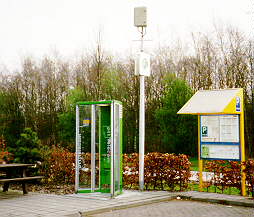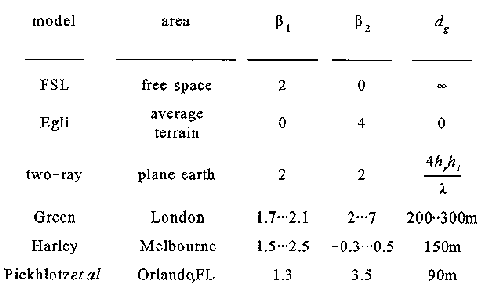
 |
JPL's Wireless Communication Reference WebsiteChapter: Wireless Channels
|
 Microcellular networks use a cell size of, say, 200 to 2,000 meters.
Propagation models for micro-cellular communication typically model the path loss law as a transition from free-space propagation to groun wave propagation if
d < dg
where theoretically the turnover distance dg
occurs at
dg < 4hR hT / l, where d is the distance of the radio link under study, hR
and hT are the heights of the receiving and transmitting antenna respectively, and
l
is the wavelength of the transmitted wave.
Microcellular networks use a cell size of, say, 200 to 2,000 meters.
Propagation models for micro-cellular communication typically model the path loss law as a transition from free-space propagation to groun wave propagation if
d < dg
where theoretically the turnover distance dg
occurs at
dg < 4hR hT / l, where d is the distance of the radio link under study, hR
and hT are the heights of the receiving and transmitting antenna respectively, and
l
is the wavelength of the transmitted wave. Various models have been proposed, e.g. a step-wise transition from "20 log d" to "40 log d" at a certain (turnover) distance.
![]()
where r is a normalized distance, with r = d / R, with d the propagation distance in meters and R the cell size
in meters. Similarly
rg = dg / R
is the normalized turnover distance, and ![]() is the local-mean power (i.e., received power averaged over a few meters to remove to effect of multipath fades). Studies indicate that actual turnover distances are
on the order of 800 meters around 2 GHz.
is the local-mean power (i.e., received power averaged over a few meters to remove to effect of multipath fades). Studies indicate that actual turnover distances are
on the order of 800 meters around 2 GHz.

A smooth transition is often considered in theoretical system studies.